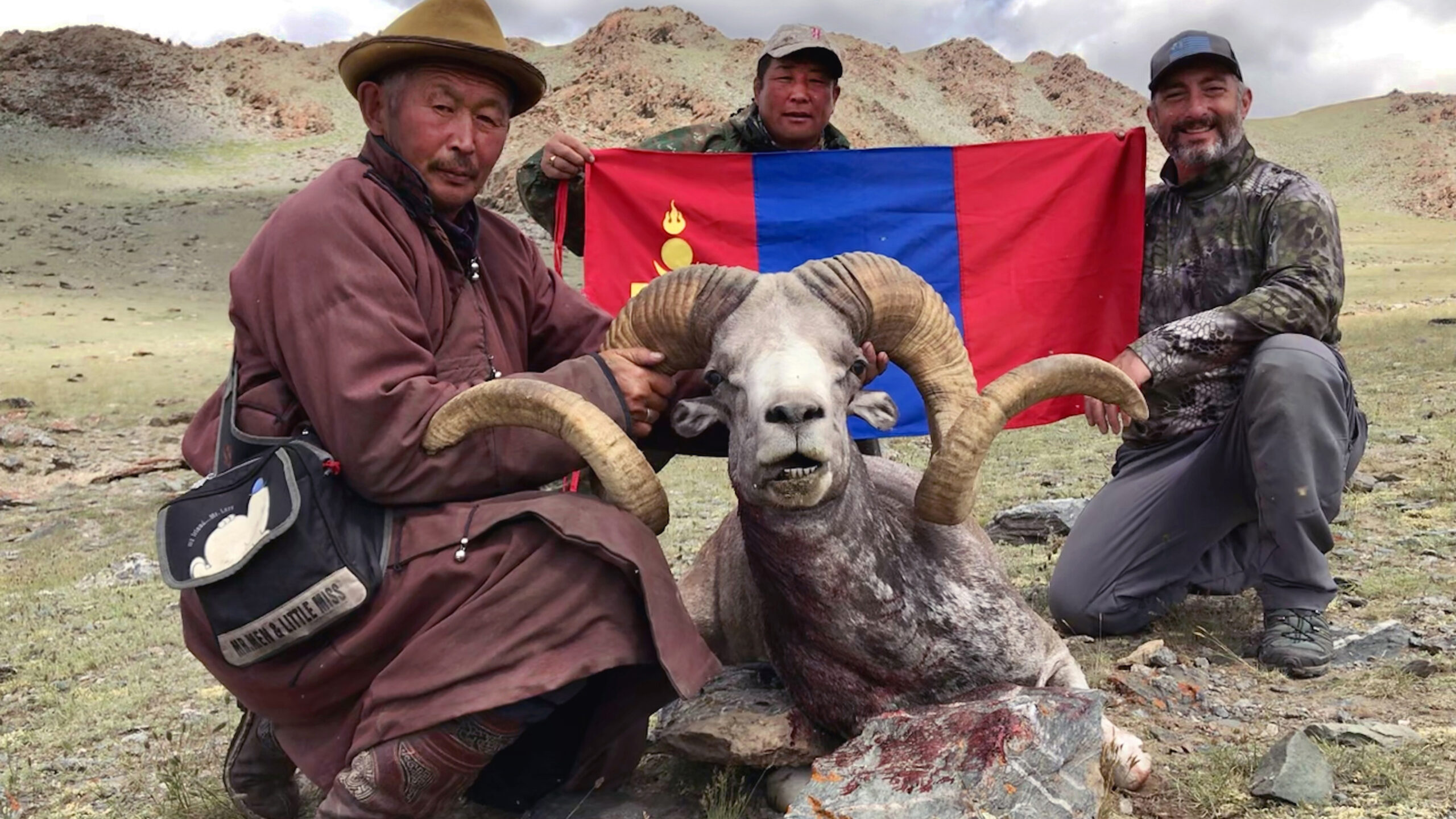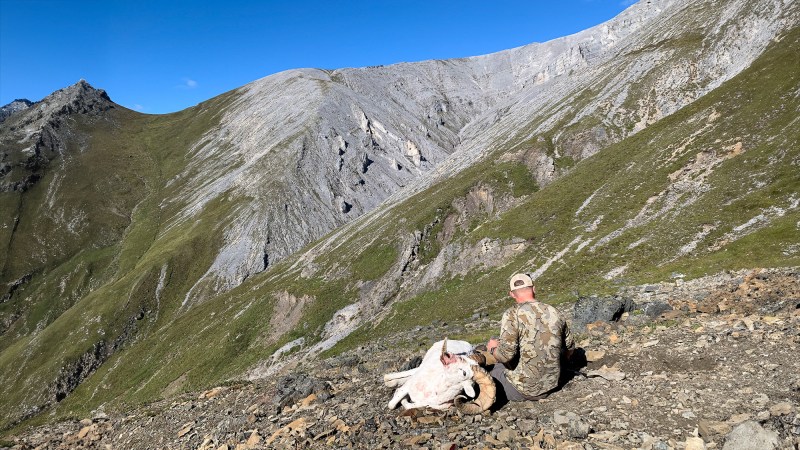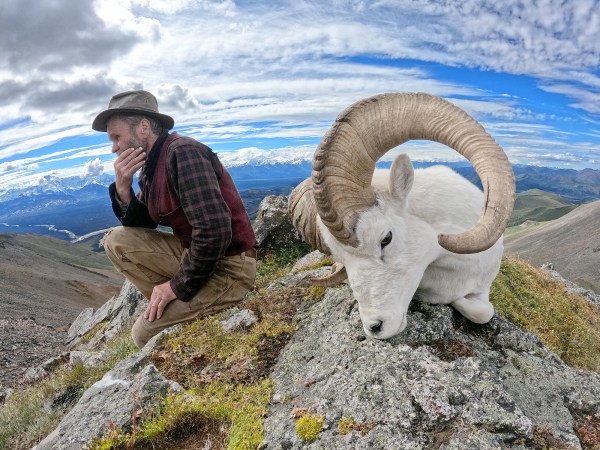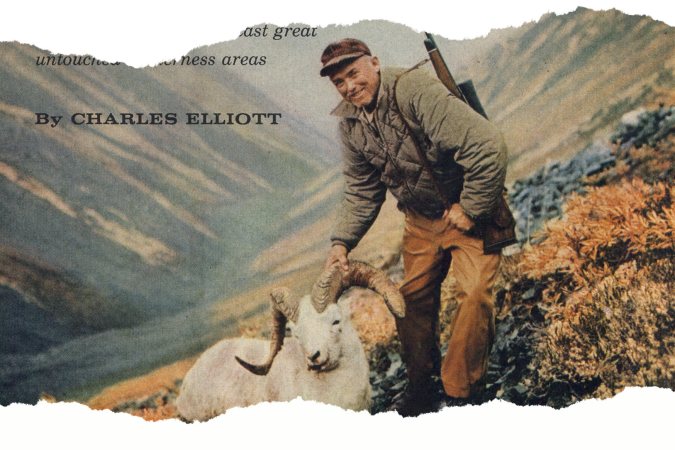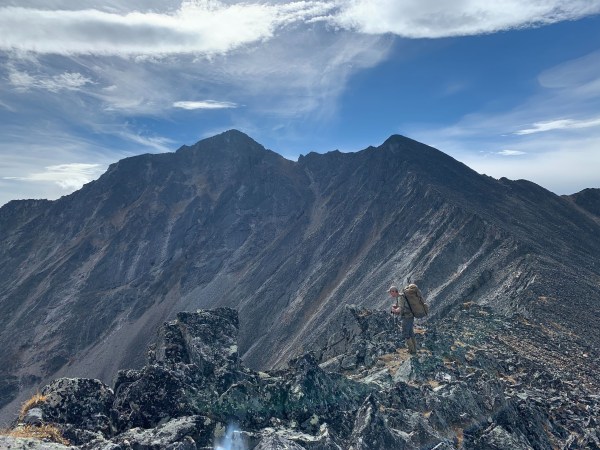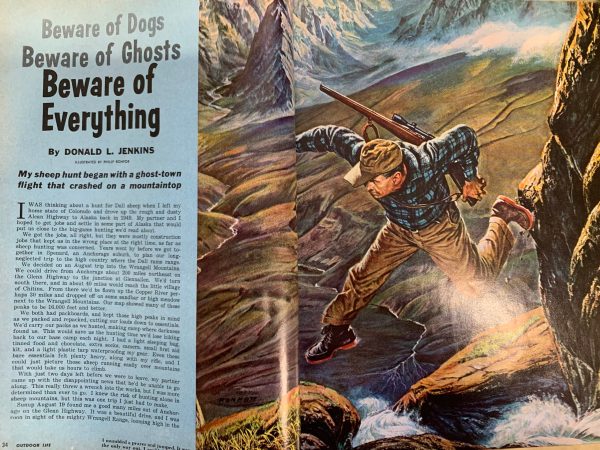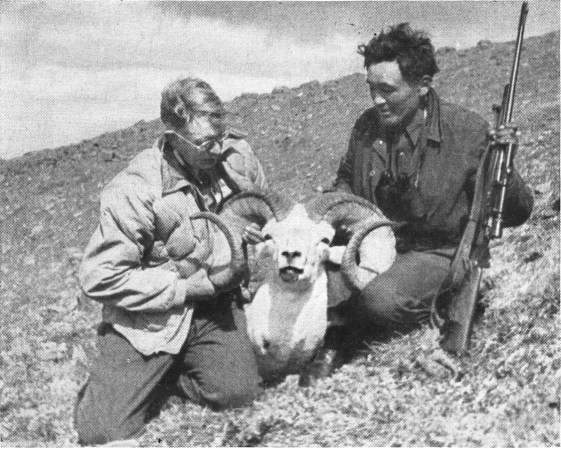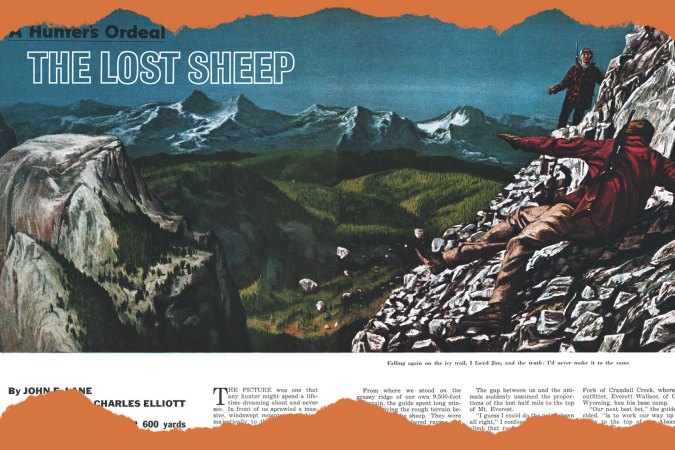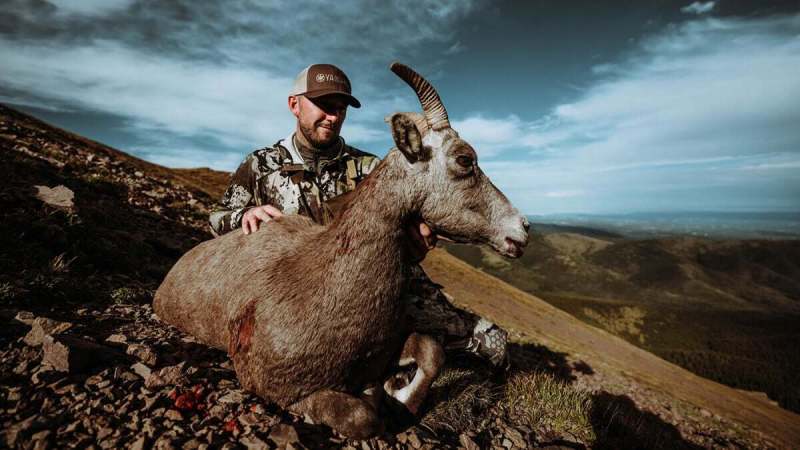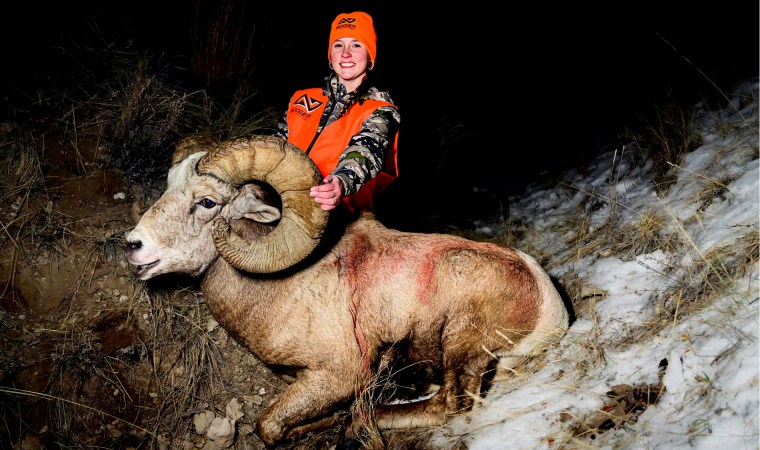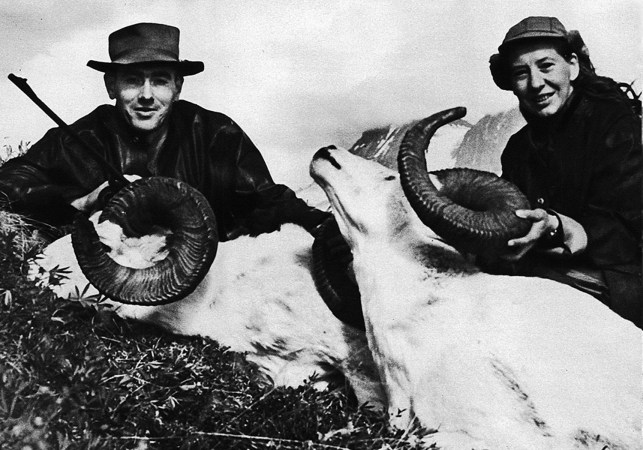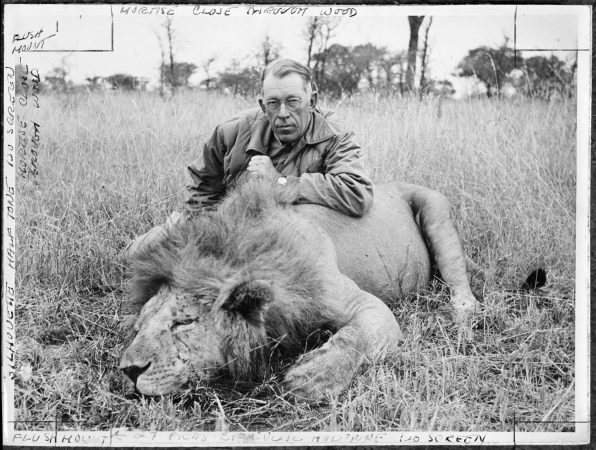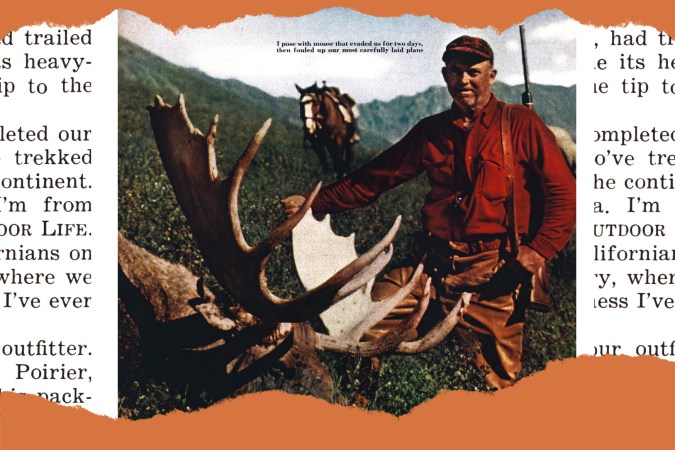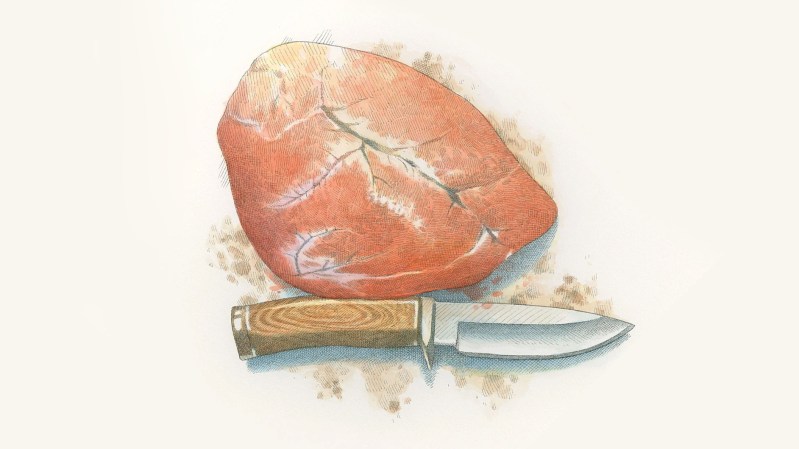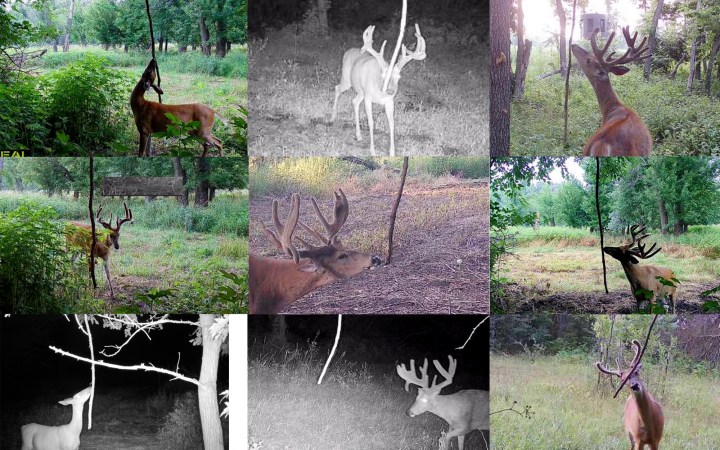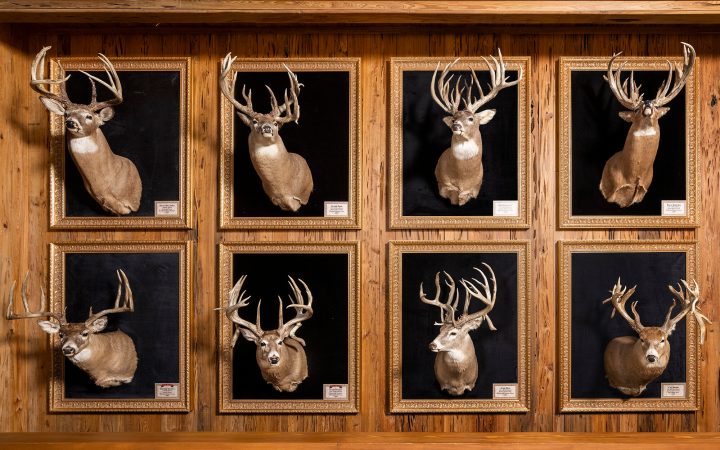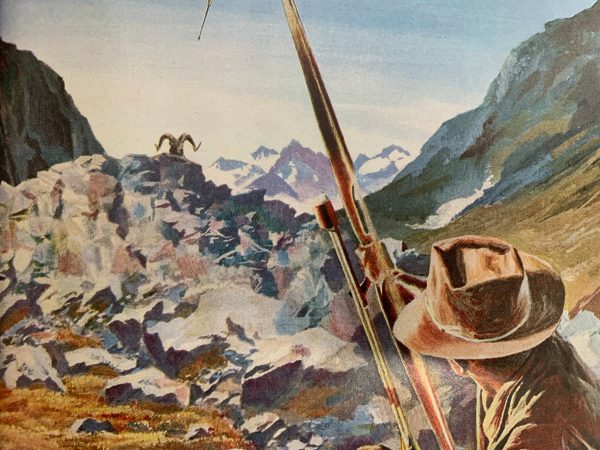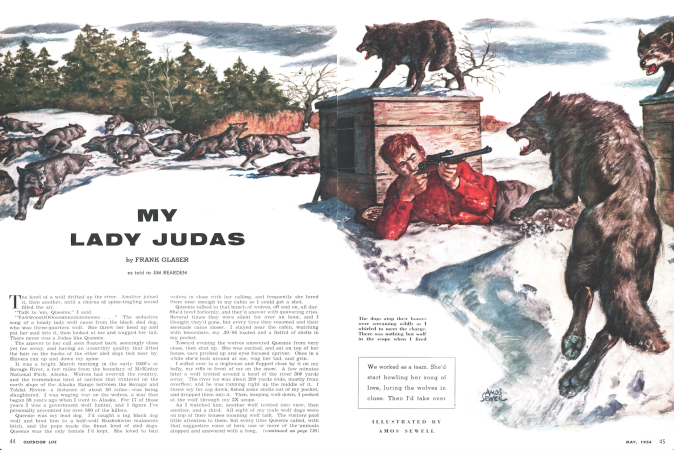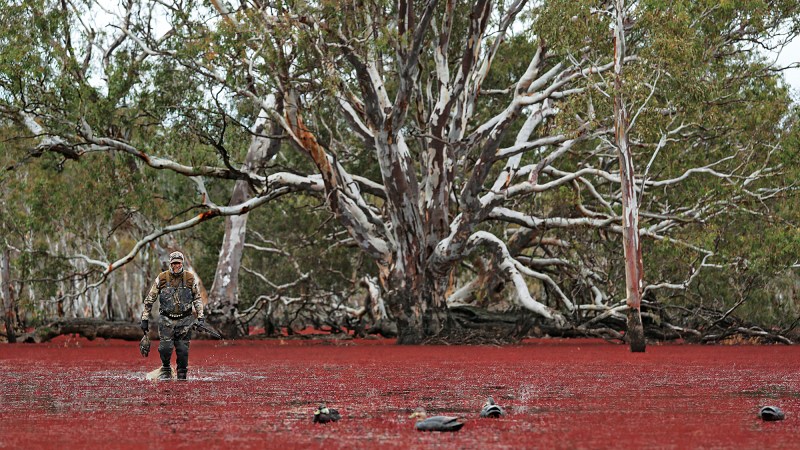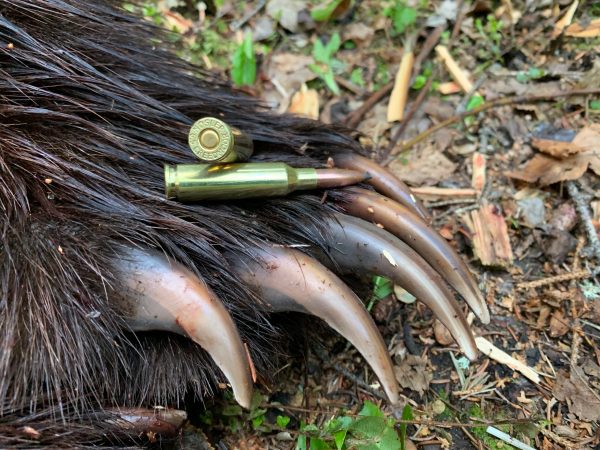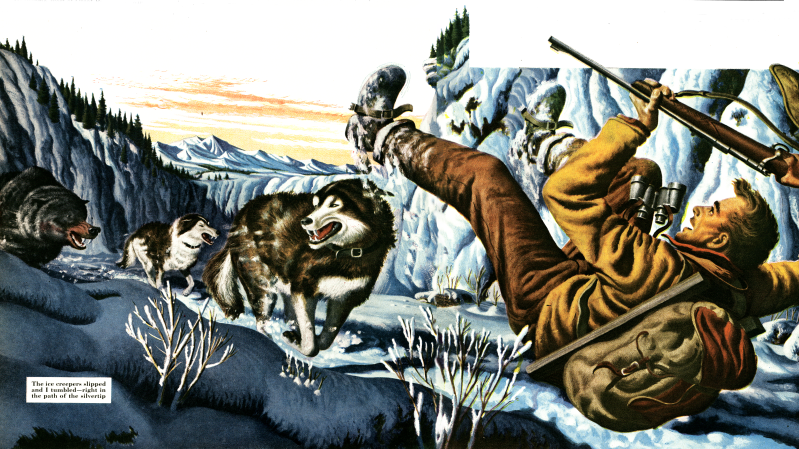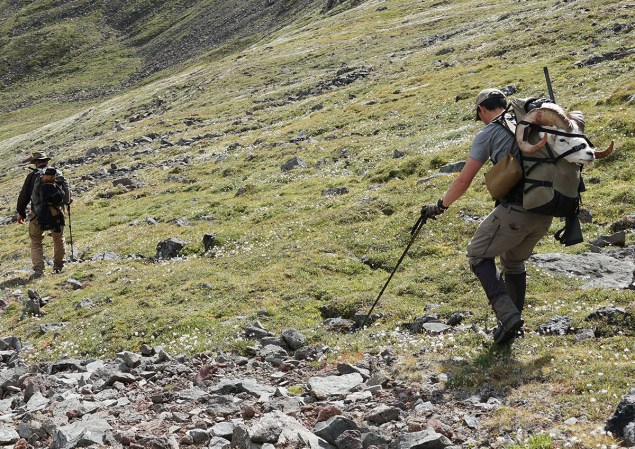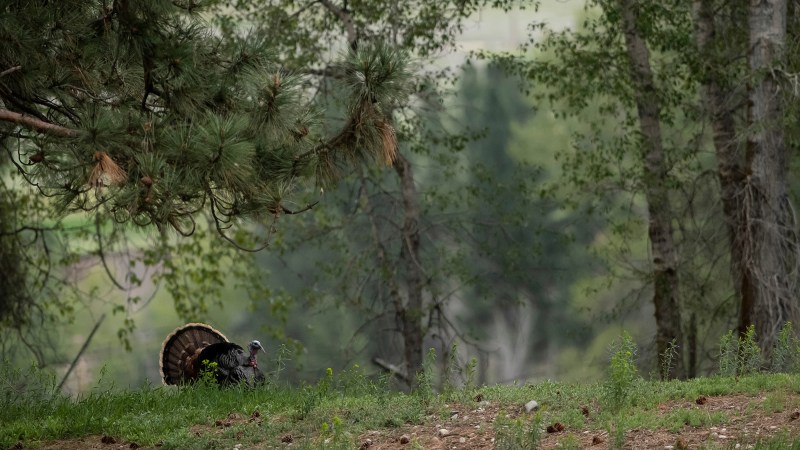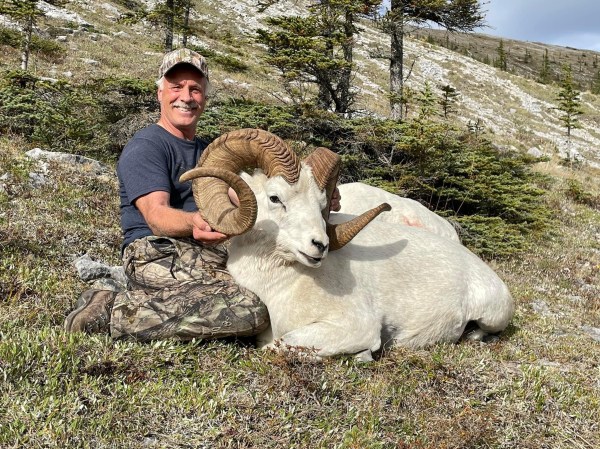LOOKING OUT over the rolling steppe surrounding the Khentii Mountains of northeast Mongolia, it’s easy to understand how its people once conquered the world. This is ideal horse country. Unspoiled land, covered with grass and forage, rolls smoothly from one horizon to the next. There’s nothing to cause a rider to check the headlong charge of his steed.
In the mountains above the steppe, which are not very tall or severe, lives one of the three subspecies of the argali sheep. The Hangay argali is the middle child: smaller than the Altai argali of westernmost Mongolia, larger than the Gobi argali that lives in the Gobi Desert that defines much of the country’s southern border with China. All are easy to recognize with their distinctive double-curling horns.
My hunting party had spotted a band of Hangay sheep the previous day, and we were trying to relocate them while waiting for Jason Vanderbrink, the president of Federal Premium Ammunition and one of my hunting partners, to arrive in camp. He had been delayed during the long trip from the United States to Ulaanbaatar, Mongolia’s capital.
My trip to Mongolia had some glitches too. I came directly from Africa, where I had been hunting, and a short layover in Ethiopia’s capital meant I couldn’t bring a rifle. There would be no way to clear customs between flights. To overcome this logistical snag, our outfitter had secured an ideal loaner for me: a Blaser R8 in .300 Win. Mag., topped with an excellent piece of European glass.
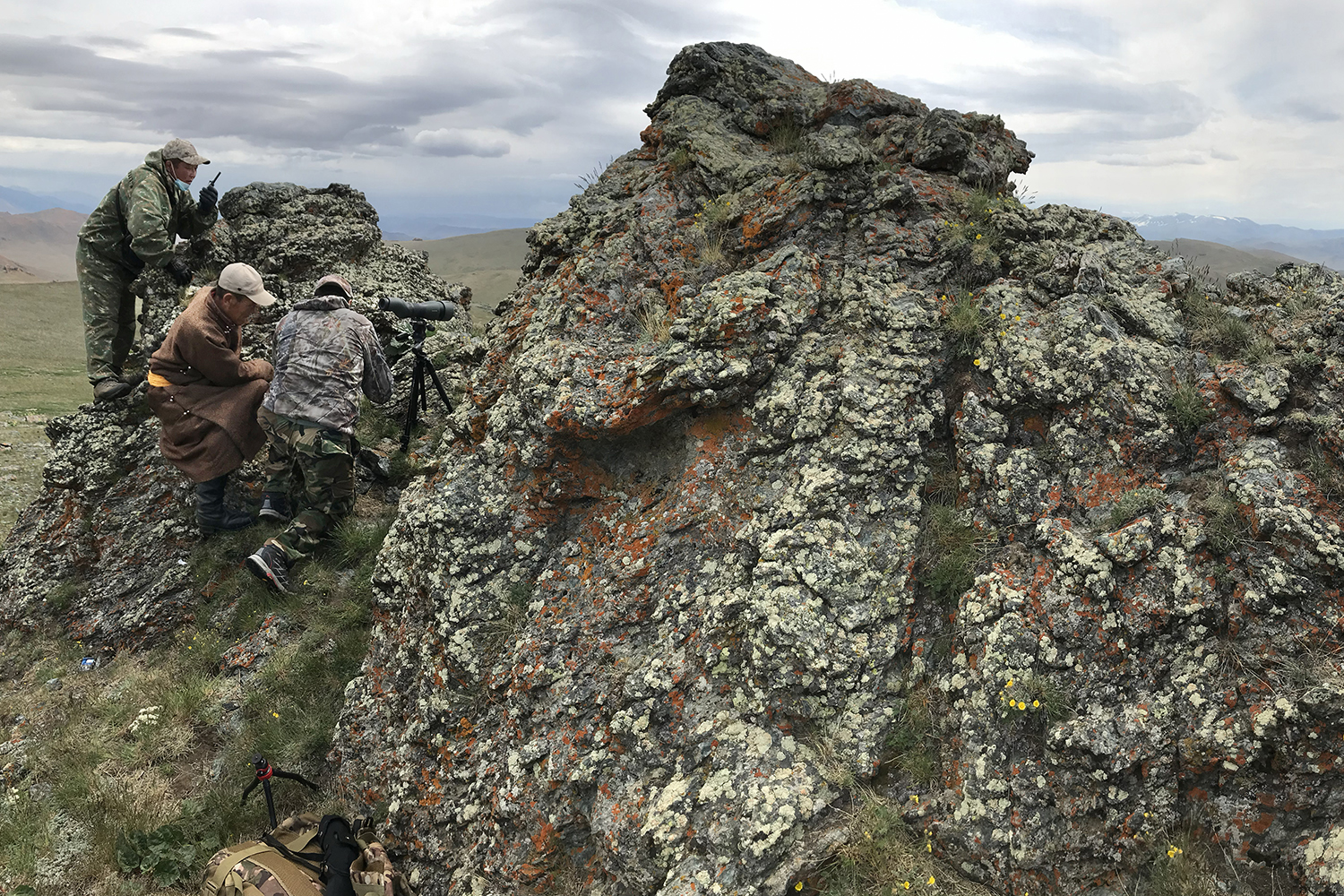
But, of course, trouble comes in threes, and because Jason was delayed himself, he couldn’t bring his rifle either. As one of the hosts of the hunt, Jason would take the Blaser that had been set aside for me.
If there’s one thing I’ve learned about hunting internationally, it’s that you have to roll with the punches and not sweat the small stuff. Or even the big stuff. I assumed that when it was my turn to stalk one of these amazing sheep, we would have secured a rifle for me to shoot it with.
A Nomad’s Camp
Our camp consisted of a series of round structures called gers, which I mistakenly referred to as yurts before being corrected. Though they look similar, yurts are less sturdy. Gers are designed to shelter families from the severe Mongolian winters. Except for the plastic tarp that covers the structure, the little buildings are constructed entirely of natural materials: hand-hewn wood slats, thick slabs of felt, braided horsehair, knotted animal sinew.
We were lucky to have a good cook in camp. Dagva Dorj Lkhagva had trained in England with Jamie Oliver for six years, and every evening was a meatfest. Our main source of food was the sheep Dagva had brought and butchered. Since the innards spoil first, that’s where Dagva started. He made blood sausage the first night and served it on a large, dented metal platter. Though the gray-and-bluish offal wasn’t much to look at, we attacked it with our knives, added salt, and consumed it all.
After dinner, as at every hunting camp since the beginning of time, we sat around a fire and told stories. The eldest of the Mongolians in our crew, a man named Nyamaa with a wicked smile and a face as weathered as a washboard two-track, broke out a bottle of soyorkhol, which translates as “spring water,” to test us with Mongolian hospitality.
Before drinking from the cups he poured, we dipped our fingers in the liquor and flicked drops in each of the four cardinal directions, asking for blessings for the sheep hunt and toasting to our friendship. The spring water was liquid fire, and, after we had toasted multiple times, Nyamaa said with satisfaction, “You are not fucking tourists. You are hunters, like us.”
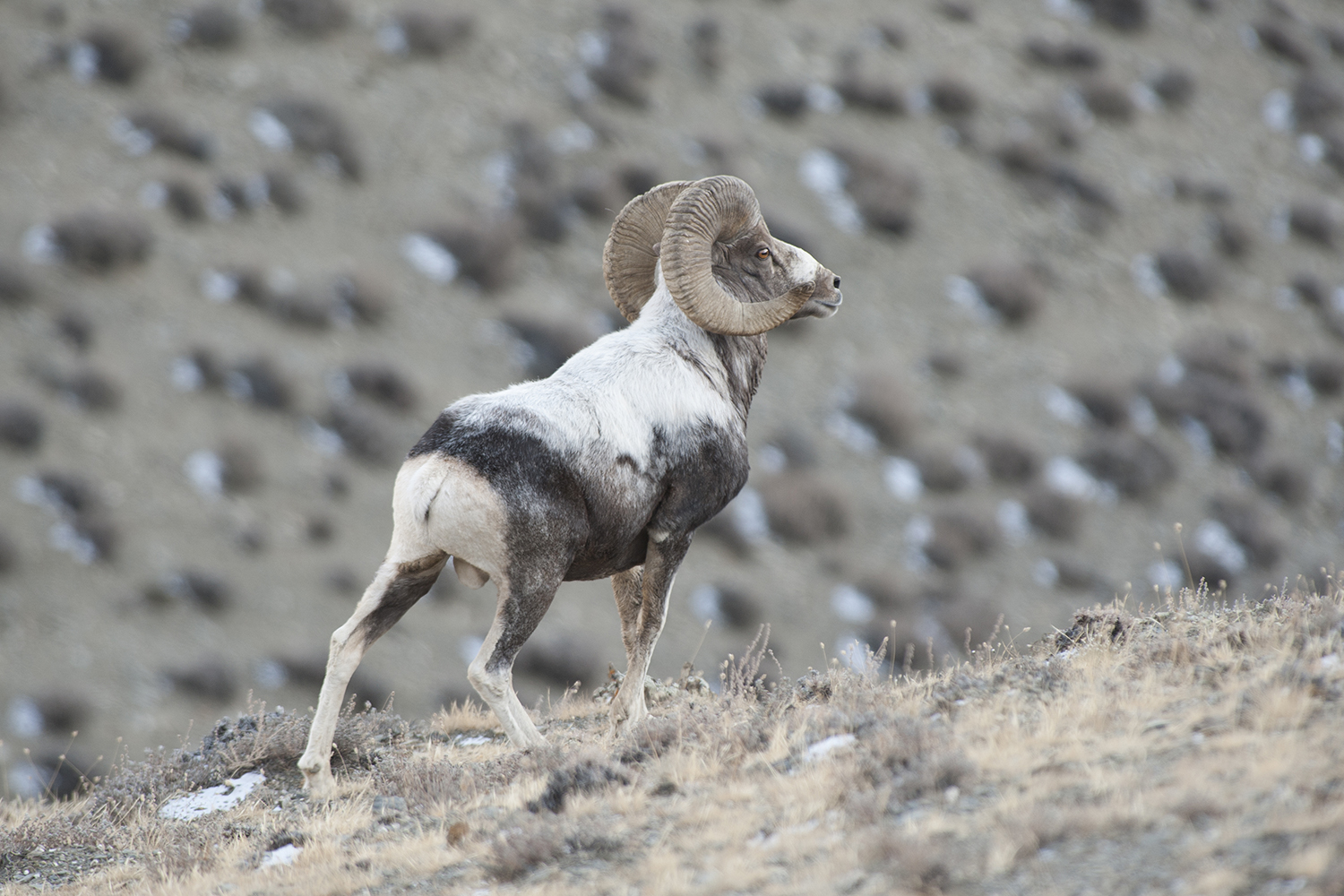
From Steppe to Desert
Once Jason arrived, we got down to the serious business of sheep hunting. He made an efficient stalk and a clean shot on his ram. We had no scale to weigh the Hangay argali’s head, but the horns had to be around 50 pounds. It was difficult to understand how that much horn could be supported by the sheep’s relatively lean neck. I could only imagine what my sheep might look like, the Altai argali, which lives in the forbidding mountains where China, Kyrgyzstan, and Mongolia meet, and is the largest of them all.
But before that, we had to go to the Gobi Desert.
As we were saying our goodbyes, Dagva gave me a hard wafer that looked like a slab of white chocolate.
“That is aaruul,” he said. “It is dried curd that is left over when we make milk vodka from yogurt. It is light, easy to carry, doesn’t spoil, and has lots of calories. With dried meat and vodka, it is typical soldier’s fare.”
I bit into the square. It was hard with a sour-salty taste, though not unpleasant. I thanked him and we piled into our trucks.
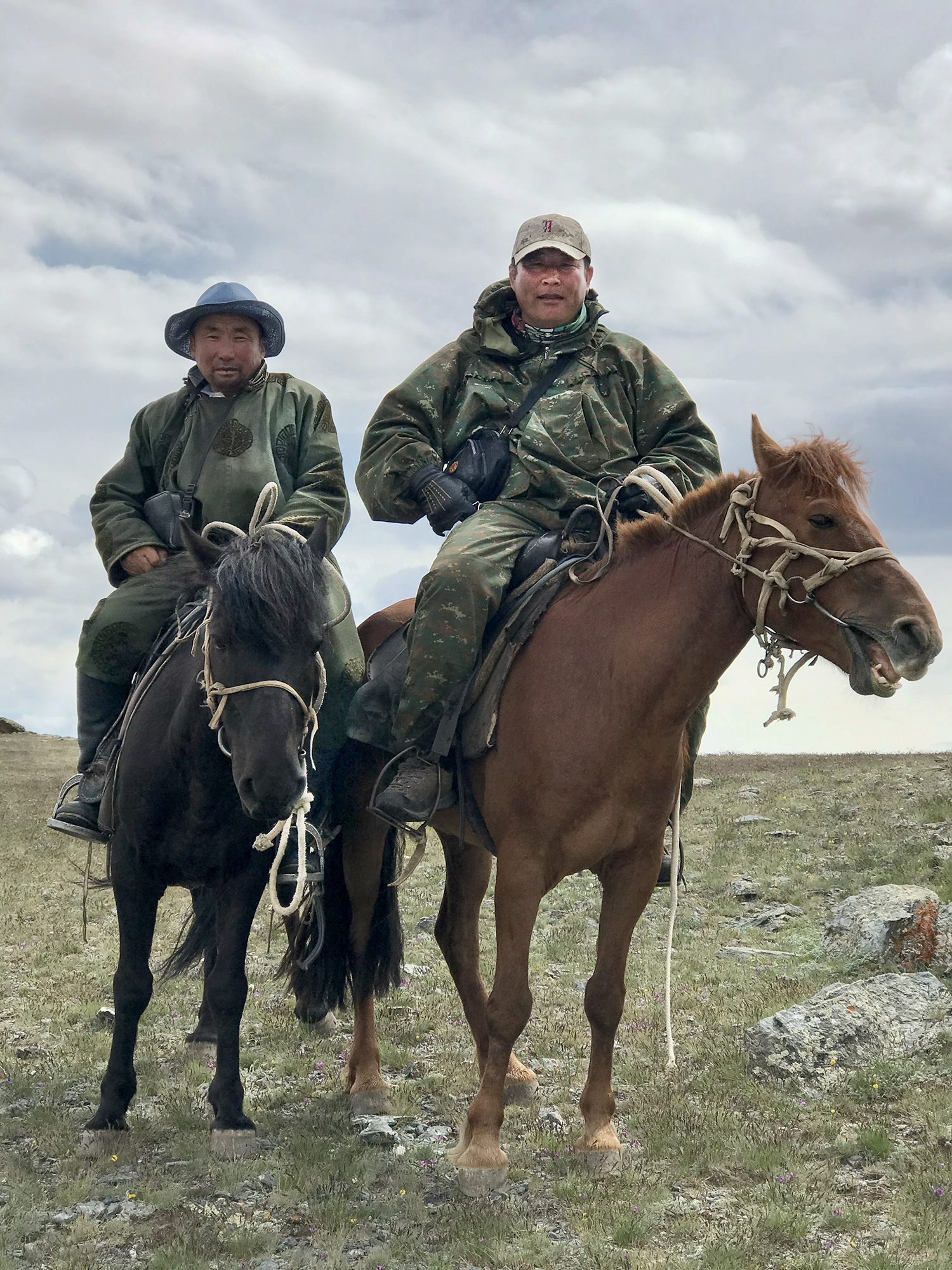
As a product of the American public school system, I didn’t have much of a notion of Mongolia before I got there. Mongolia is landlocked, sandwiched between Russia and China, and the influence of those imposing neighbors is evident everywhere. But Mongolia is by no means tiny. Ranked by land mass, it’s the 20th-largest country on earth and roughly the size of Alaska.
Genghis Khan looms large over this landscape, both figuratively and literally. He is believed to be from the Hangay region, and on the six-hour drive from Ulaanbaatar to our camp we had passed a massive statue of him in his war regalia astride a horse. It towered hundreds of feet above the countryside, and you could see how the image of that world-conquering warrior leading his nomadic followers to global conquest is still central to the national psyche.
Many Mongolians still lead a nomadic lifestyle. Once winter releases its hold on the steppe each year, they depart their cities and villages and head to the countryside to live in their gers and tend their animals. During the summer they hold festivals where they race horses and compete in archery and wrestling tournaments.
The drive from the Hangay region in northeast Mongolia to the Gobi took 19 hours. We headed south in our caravan. Gradually, we made our way through police checkpoints and around slow-moving semis that belched thick black clouds of diesel exhaust. Our drivers did their best to avoid the most formidable potholes and gaps in the pavement to save their suspensions and minimize pounding on our kidneys. But it was a hopeless task.
With each passing hour, the landscape changed. The lush grassland gave way to hard, sandy soil where only patchy clumps of yellow grass grew. Late in the afternoon we pulled off the paved road beside an abandoned city on the edge of the desert. Massive buildings loomed empty behind fences topped with rusted spirals of razor wire. An old tracked rocket launcher sat at the city’s entrance.
On the edge of the derelict city was a shanty town. We drove through a maze of corrugated metal, plywood, and fraying nylon tarps. Fires burned in barrels next to the makeshift structures. Apart from a few faces that peered out from inside the huts, the only signs of life were dogs walking the street. They were not the kind you pet.
We headed straight south across the desert, my driver navigating by the compass on his dash. Deep in the night a light appeared on the horizon and our convoy altered course for it. In time, I realized it was a radio tower sheathed in powerful white lights — a beacon to travelers in the emptiness.
At its base sat a small fuel depot that looked like something lifted from the set of Mad Max. One of our drivers banged on a door to wake someone so we could refuel.
Just after midnight we pulled into camp, a compound with low brick walls clearly visible in the brilliant starlight. We were offered food but declined. We’d been driving nonstop for nearly a day and only wanted to sleep.
We got up just after 4 a.m., still tired but eager to hunt. We parked at the foothills of some reddish mountains and hiked a trail of sharp stones. There was hardly a cactus or bit of grass to be seen. It wasn’t long before we spotted a couple of groups of sheep in the distance. Though Gobi argali are the smallest of the three subspecies, they are still impressive. The horns of a mature ram dwarf those found on North American desert bighorns.
I spent the day with Jason, trying to find a ram, while Chris Metz, the CEO of Vista Outdoor, made quick work securing his sheep. Chris’ crew spotted his ram from a mile away and watched it bed down in a gorge. The sheep had its back to a rock and a perch that gave it a 270-degree view.
They snuck up behind the ram, making their best guess as to its position as they crawled over the ridge on all fours. They guessed almost too well: When they crested the rock, the sheep was 20 yards away, and it bolted.
Chris’ guide bleated, stopping the ram long enough for Chris to hit it at 117 yards with his 6.5-284 Norma. His Gobi ram was an old warrior, broomed off on both sides and, by the guide’s estimation, 11 years old.
Jason shot a ram early the next morning, and we packed our gear and loaded into our vehicles. The bad news was that we had a 24-hour drive back to Ulaanbaatar, at which point we’d fly to the western corner of Mongolia. The good news was that we could now focus on our Altai argali — the sheep I had a tag for.
A Mongolian Sheep Rifle
Eventually, we touched down in Bayan-Olgii, Mongolia’s westernmost province and the heart of Kazakh culture in Mongolia. This region is quite different from the rest of the country. For one thing, the dominant religion of the Kazakhs is Islam; most of the rest of the country practices a form of animism. Secondly, few Kazakhs speak Mongolian; Kazakh is their native tongue. It’s rarer still for Mongolians to speak Kazakh, and this lack of communication leads to a degree of mutual suspicion and distrust.
When Dagva, the chef in our first camp, learned I’d be traveling to Bayan Olgii, he took me aside.
“You cannot trust these men, the Kazakhs, who live in the west. They are snakes. They don’t drink or smoke. They are cold.”
While our party had been crisscrossing Mongolia, our outfitter managed to secure a rifle for me. It was borrowed somehow (I didn’t ask too many questions) from a Mongolian policeman. It was a heavy-barreled Tikka T3X chambered in 6.5 Creedmoor. While I appreciated the policeman’s taste in rifles and cartridge, his choice of optic left much to be desired. It was a Chinese-made 3–9X with a plain duplex reticle. Looking through it was like gazing across Beijing on a smoggy day.
Along with the rifle, I got one box of ammunition. This was a little awkward. In theory, I was supposed to be shooting Federal’s Terminal Ascent bullet, which was brand-new at the time. The bullet would have been ideal for these argali — as Metz demonstrated with the 130-grainers used on both his sheep. The bullet is designed to be extremely accurate while delivering good terminal results at long distances — meaning the bullet will upset in a reliable manner at lower impact velocities.
I had been using the Terminal Ascent since the first prototypes were introduced. It had been one of my go-to projectiles for testing new rifles, and I’d killed a few animals with it. I’d also seen it work on other hunters’ game. I had really been looking forward to shooting it on this hunt. Instead, I had 20 rounds of Czech-made 140-grain soft points for my optically challenged Tikka.
Our hunting party left Olgii in three vehicles: Jason in one, Chris in another, and me and Ahren in the third. We split up and went our separate ways, each of us destined for his own hunting area.
Along the way to camp, Ahren and I stopped and set up a cardboard box at 100 yards to check the borrowed Tikka’s zero. My first shot was low and a couple inches to the right. A second shot nearly touched the first. I dialed a correction and put one more downrange. That shot hit the bullseye we’d drawn. The rifle was as good to go as it would ever be. Lacking any data regarding bullet velocity or BC, and having no reference marks in the murky scope, I would have to rely on Kentucky windage for any sort of longer shot.
Once we got to the hunting area, I realized that a longer shot was most likely in my future. The country was dominated by vast drainages with no timber and little cover to speak of. It dwarfed all other mountains I’ve seen, and I’ve hunted up and down the Rockies and around the world. It was beautiful and awe-inspiring. But it made me wonder how I’d manage to connect with a ram once we found one.
Communication Breakdown
Our hosts didn’t seem like snakes at all, but they were certainly reserved. Their faces gave nothing away when they spoke, at least at first. The head guide struck me as the friendliest of the lot. His main scout, who always wore traditional robes and had sharp features that could have been carved from granite, maintained an imposing expression.
During introductions, we stood around and nodded at each other as each man spoke his name. That was the limit of what we could verbally communicate, given that the language barrier was more formidable than the mountains that surrounded us. As an American, I speak only English and a smattering of Spanish, which was of no use in Western Mongolia as it turns out. My partner, Ahren, a wonderful guy who spoke so-so English, was fluent in his native Turkish. We had an ethnic Mongolian in camp who was officially our “translator,” which meant he spoke a bit of Turkish and little Kazakh. That wouldn’t have been so bad if all the Kazakh guides in camp were able to speak Mongolian. But only two did — barely.
A typical exchange went like this. I would turn to Ahren and say, “How long until dinner?” He would ask the translator. The translator and the Kazakhs would talk back and forth. The translator would then reply to Ahren in his version of Turkish. At which point Ahren would look at me apologetically and tell me, “They said you can pee anywhere you want.”
What I had been able to glean before leaving Olgii was that my crew had been in the mountains for the previous 15 days, looking for sheep. There was one ram in particular they hoped we could find. He was an old, impressive specimen that they had hunted the previous two years without success.
By the time I arrived in camp, we had only four days left to hunt. So we wasted no time, driving in the main guide’s old Nissan Pathfinder to a high point and then hiking up a ridge to glass.
We repeated this drill a few times, eventually spotting a group of about fifty rams. We stalked closer, doing the best we could to keep the odd boulder or rise between us and those hundred eyes. After picking our way across a couple of miles, we used a finger of rocks to cover our final approach. We were perched 390 yards away and 200 feet above the bedded and grazing sheep.
We watched them for several hours, during which the guides tried to communicate which rams they deemed possible shooters. Of the fifty sheep, maybe two rams made the grade. Whatever friendliness I’d encountered when we first met evaporated as we lay there. They wanted to know what I wanted to do. I asked whether the big ram they’d spoken about earlier was in the group. The answer was no.
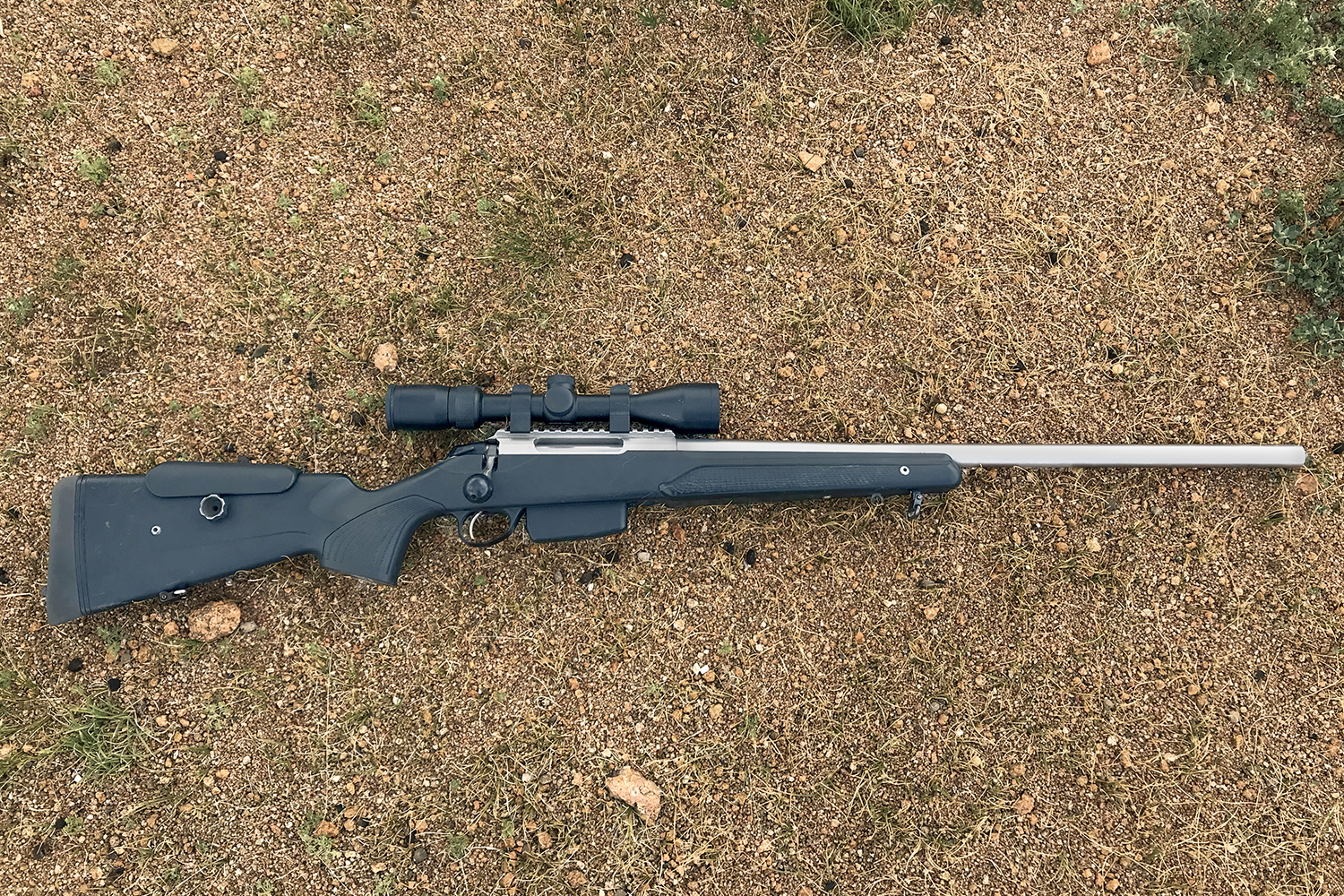
I’d hunted sheep years before in the Alaska Range, trying to get a Dall. It was one of the toughest hunts of my life, and at the end of two weeks I went home empty-handed, never having laid eyes on a legal ram. Here I had a couple of really nice rams to pick from, but it was just the start of my hunt and I didn’t want to pull the trigger so soon. I debated with myself, wondering what to do. Finally, I said I wanted to keep hunting. The guides remained expressionless as we climbed back to the truck, and I wondered whether I had just made a huge mistake.
A Final Search
Back at camp, the head guide told me they would find the big ram, and he rode into the mountains on his horse as the other guides fanned across the country on motorcycles or their own horses. His main scout, the hard-faced one, stared at me before he too jumped on his horse and rode off.
Later that afternoon, we learned they had spotted the elusive ram. There was a gamekeeper with us in camp — a government wildlife official — and Ahren, the translator, and I piled into his Russian-made jeep, squeezing into a space about twice the size of a shopping cart. As the four of us left camp, a wave of dark clouds rolled in and it started to rain.
No doubt you’ve heard of the legendary reliability of Russian military vehicles. As we sputtered up the mountain to rendezvous with the main guide, the jeep gave out. The first time this happened, the gamekeeper grabbed a couple of 2-liter soda bottles filled with water and shook them empty over the radiator and engine block, creating clouds of steam. He restarted the engine and off we went.
Soon the jeep rumbled and groaned in protest, then the motor coughed and died. Out came two more bottles of water. Into the cabin flowed more steam. Somehow, in all the excitement, the gamekeeper managed to lose the knob controlling the engine’s choke. He cursed through clenched teeth while using pliers to work the choke. As he cranked the engine, I looked up at the saddle we were trying to get to.
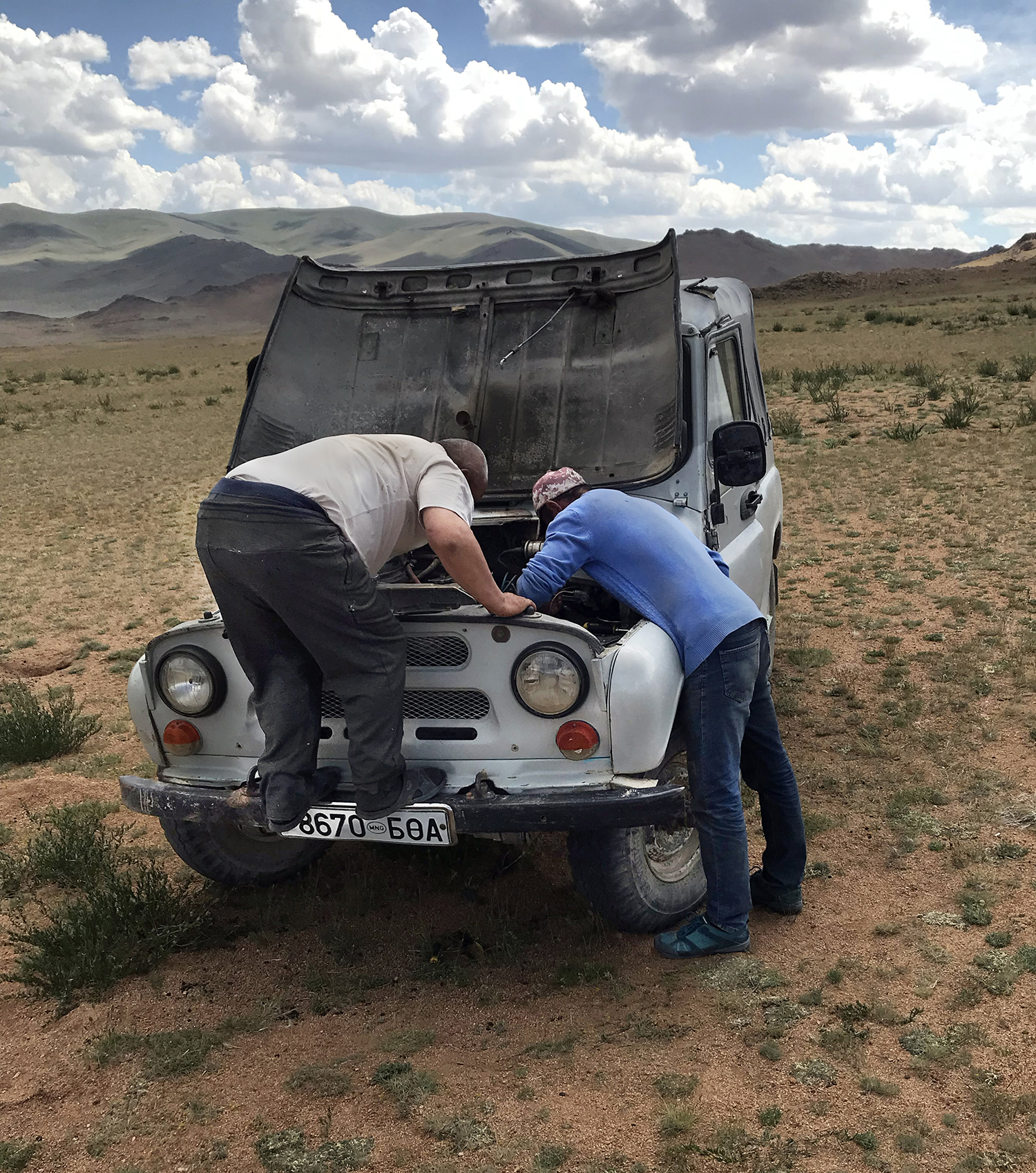
The rain was now coming down in sheets, pushed slantwise by the wind. Over the crest of the pass rode the head guide and his main assistant on their ponies. They wore their long robes and wide-brimmed hats, shedding water by the bucket. I’d never seen anything so romantic in my life.
Improvise, Adapt, Overcome
The next morning, we were back in the mountains, and not only did we find the group of rams that contained the big boy, but we managed to spook them across the horizon. This led to several more hours of hiking and glassing, but eventually we spotted them again crossing a distant ridge.
We closed the gap on foot, and, once we were a couple miles from them, the head guide and I took off alone in pursuit. A series of rocky fingers covered our approach as we moved from one drainage to the next. Finally, we climbed to the band of rocks that separated us from the rams. I peeked over and saw the sheep, at least 50 of them, milling around at 450 yards. Given the size of this country, I considered us lucky to have gotten that close.
But now we faced a couple of serious issues. First, neither my guide nor I could understand a single word the other spoke. I’d been gesturing to indicate the big ram, asking whether it was there. He nodded.
Where in that mass of sheep the ram was, I had no idea. The problem was that all those rams looked amazing to me. My inexperience with these sheep was to blame. Frankly, I didn’t know what I was looking at. Imagine if you took someone who had never seen a mule deer and put them a quarter-mile away from a herd of fifty 185-to-195-inch bucks piled on top of each other. But within that group is one 205-incher you want that hunter to pick out. Worse, he can’t understand a word you say.
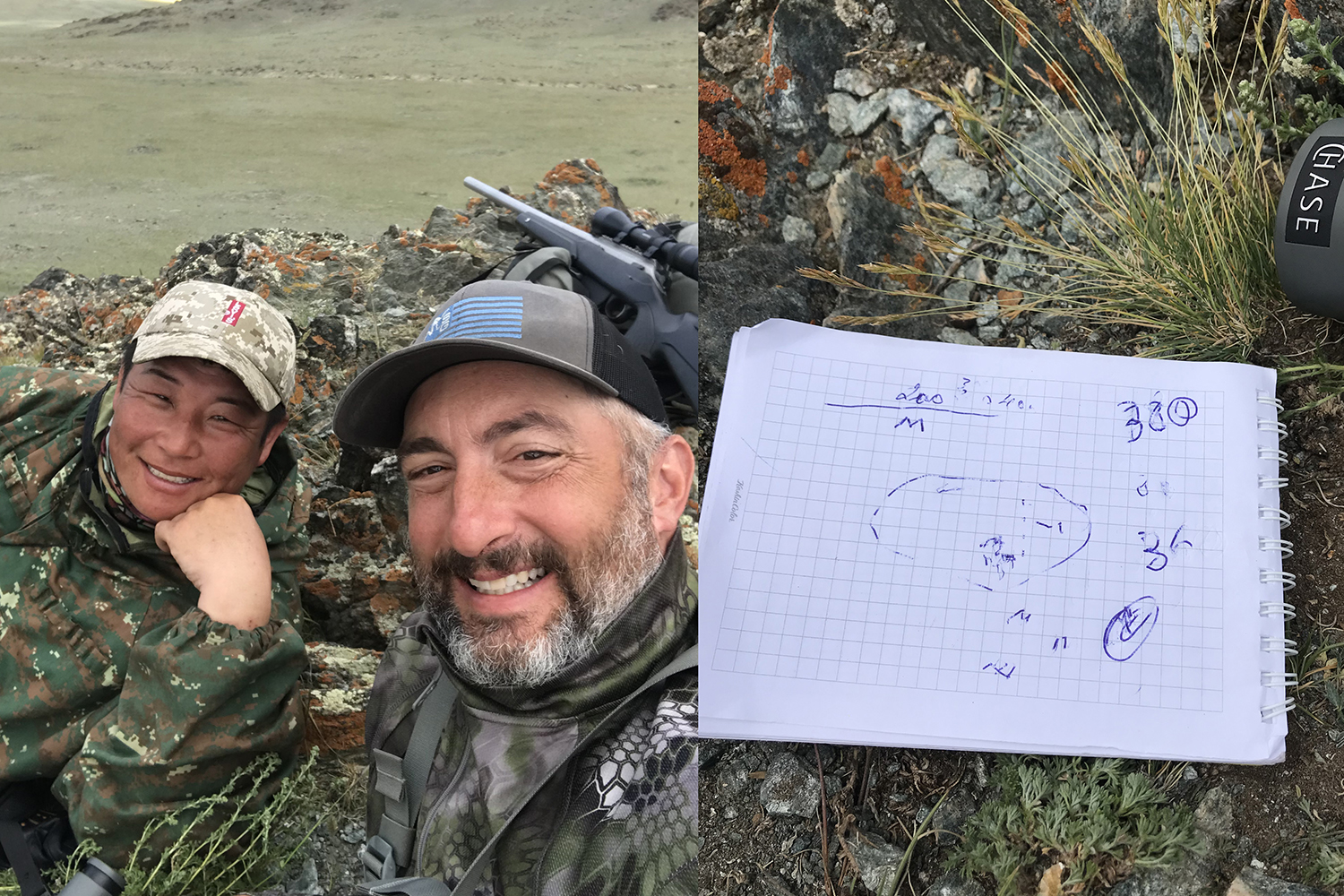
So we did what the cavemen did: We drew pictures. I had a notebook and pen and gave them to my guide to show me where the big ram was within the group. He drew circles, and squiggles, and dashes, and a couple numbers with symbols next to them for good measure. Whenever he added a mark to the paper, I tried to decipher its meaning and returned to my binocular in hopes of finding the right ram.
This went on for nearly an hour. We were both frustrated. The uneven bed of rocks we were lying on didn’t help our mood, either.
Then — finally — something clicked for me. I scanned the sheep once more and noticed one ram bedded with his head stretched out like a Lab sleeping in front of a fire. I saw his horns and made out the extra length of his curl. It was like the moment when the veil falls away for Neo and he suddenly sees the Matrix for what it is.
I looked at my guide, nodded, and said, “I see him.” Even though he couldn’t understand my words, his look of relief couldn’t have been clearer.
Now I had yet another problem to figure out: how to shoot the damn thing. My rifle had been plenty accurate at 100 yards, but at 420 — the distance to the sheep— I’d have to make my best guess.
Compounding the problem was the piss-poor riflescope. While the ram was clear enough in my Leica binocular, he became fuzzy in the scope. The shooting position didn’t help, either. I couldn’t risk cresting the ridge we crouched behind to get more stable for fear of being spotted. My cramped, awkward sprawl would have to do.
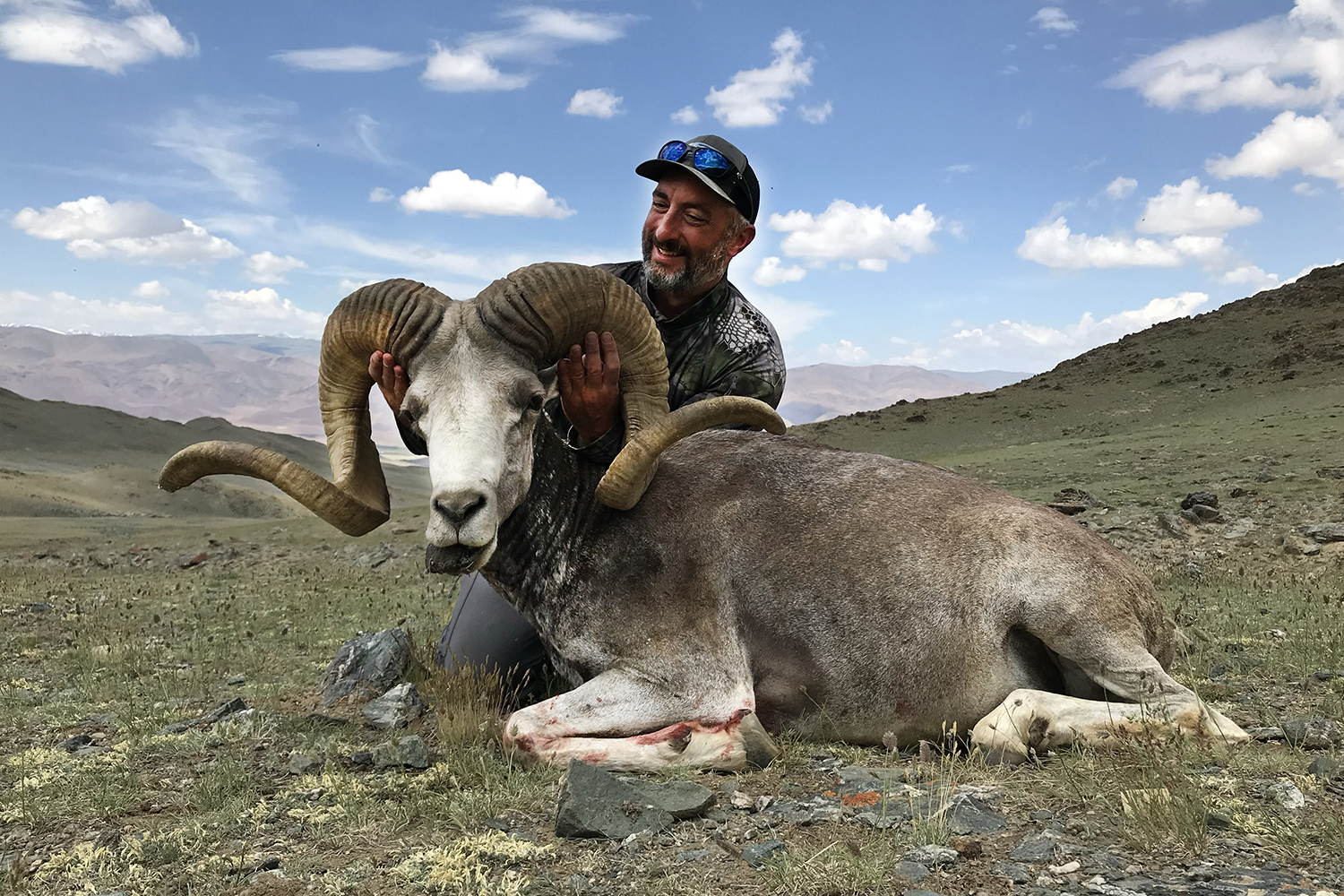
I did some calculations in my head about where to hold the crosshairs above the sheep. Fortunately, I’ve shot thousands of rounds of 6.5 Creed over the years, so I had that going for me. Also, there wasn’t much wind to speak of, and for that I was grateful. Nonetheless, I’ve never had so much riding on a single shot.
I settled in behind the rifle as best I could, cursing the murky optic, and waited for the ram to get to his feet. After about 10 minutes, he obliged. Once he was clear of his compatriots, I fine-tuned my hold and cut loose.
Because of the lousy shooting position, I lost him in the recoil. The first thing I did was shout, “Did I hit him?” — forgetting in the moment that my guide couldn’t understand me. I looked through the scope as the sheep started moving away, hoping to see the big ram.
Then I noticed a ram walking in the opposite direction — toward us. He was staggering slightly, and my heart started beating again. I already had another round in the rifle, and since he was coming closer, I held a bit lower and shot a second time. He fell at the impact. My guide and I looked at each other with equal parts relief and disbelief, then started laughing and pounding each other on the back.
In all likelihood, I’ll never shoot another animal as distinct as my argali. His heavy spiral horns measure just under 60 inches on each side, and the weathered ridges on his horns and the slight brooming on his tips make him all the more impressive.
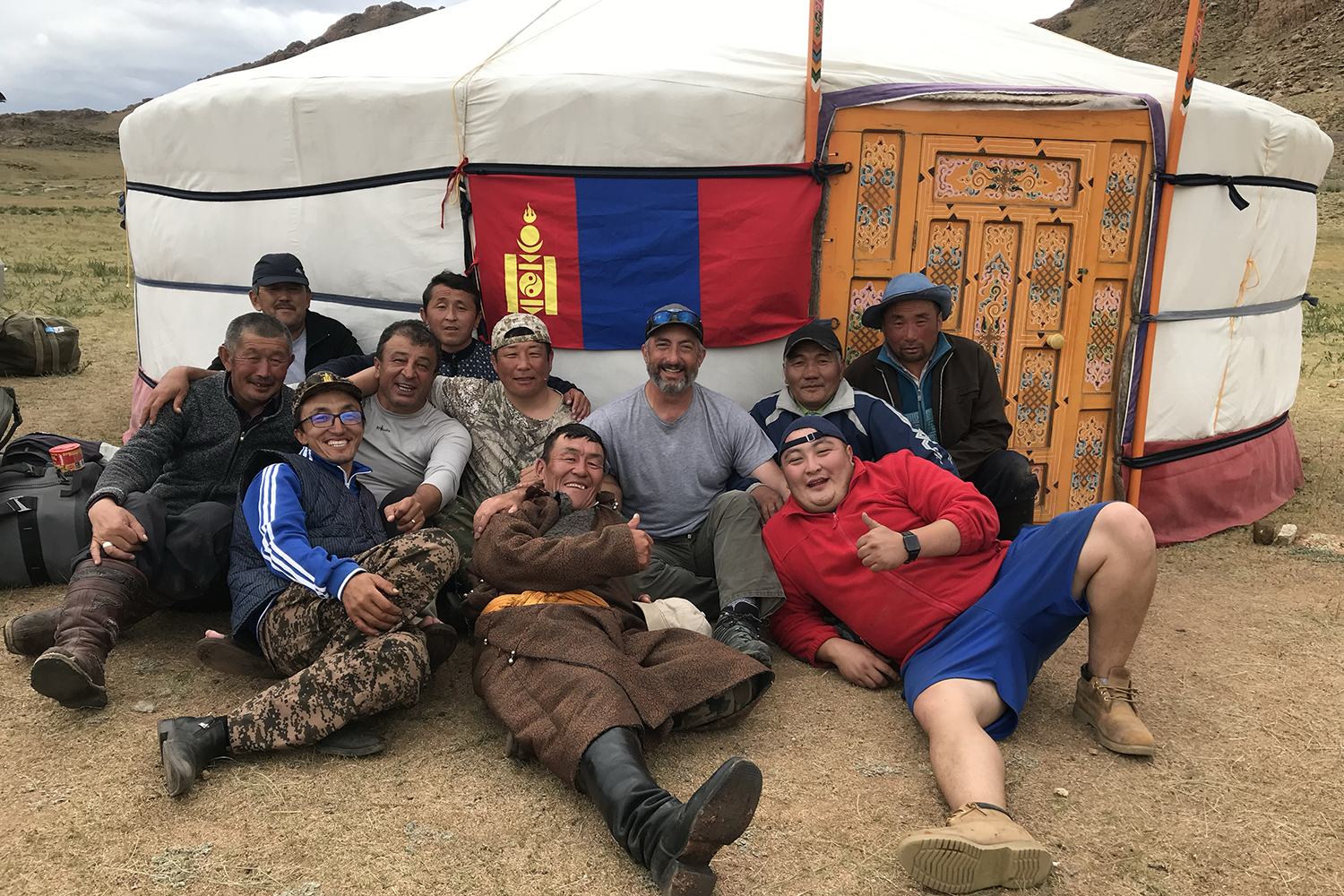
When we got back to camp, everyone was in a joyous mood — even the stoic and stony-faced main guide’s assistant. We butchered the sheep and cooked some of the meat, which we ate with rice. We also drank copious amounts of vodka to celebrate that incredible animal. The fact that we’d managed to kill the ram that had eluded this crew for more than two years — especially since they had worked so hard to keep tabs on it for two weeks before I got there — was a source of much satisfaction.
Read Next: Great Rifles for Mountain Hunting
Somehow, the more we toasted each other, the easier it became to communicate. They praised my shooting. I praised their skill at spotting game. We praised each other’s prowess as hunters. It was a veritable love fest — not a hint of coolness or reserve to be felt or seen.
At one point the serious one raised his hands to quiet everyone and fixed his gaze on me. He had something important to say. He wanted me to know something, and told me so through our halting translation process: “If you had shot a sheep the first day, I would have been sad.”
I thought, Me too, friend. I’d never been so relieved to not disappoint someone I didn’t know in my life.
This story first ran on Dec. 28, 2022.

